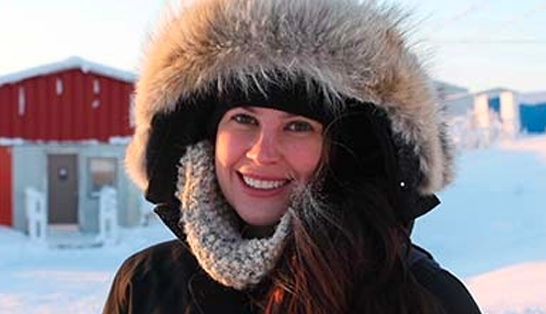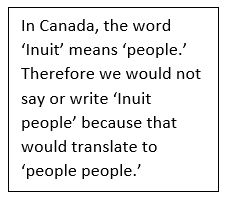For Washington State University researcher Dr. Amanda Boyd, her life-long goal is to identify health risks, including for dementia, and effectively communicate them to the population. In Boyd’s case, that population started with the Inuit living in the Arctic Circle and is now expanding to Alaska Native and American Indian populations in the US more generally.

“My work aims to help communicate about the ways Indigenous people can stay healthy as they age. I try to understand what communities know about brain health, dementia, and traditional ways to stay healthy in my research. I build on this knowledge and find the most effective ways to communicate about health. Effective communication often means providing information in a culturally congruent manner that is clear and delivered by trusted sources.”
Dr. Boyd is a member of the Métis Nation of Alberta (Canada) and an Associate Professor of health, risk, and science communication. She takes great joy in blending her cultural heritage and professional knowledge to explore how Indigenous communities talk about and understand concepts like dementia, caregiving, and risk factors. Dr. Boyd works with Inuit residing in the Arctic to learn from and create relationships with community members. “Open and effective communication about health issues can be challenging. In part by historical or individual experiences, or by violations of tribal sovereignty by researchers,” says Boyd. “This can be compounded by cultural barriers, various ways of acquiring knowledge, and differing belief systems. It’s important to note that Elders have passed on much knowledge about culture and traditions, as well as how to stay healthy. We have a lot to learn from our Elders about how to effectively communicate about health risks.”
 Boyd co-authored a study on Alzheimer’s disease knowledge among American Indian and Alaska Native people. Boyd and colleagues found that higher scores on the standardized Alzheimer’s Disease Knowledge Scale (ADKS) were associated with education, not age. They also observed the lowest scores on knowledge regarding caregiving and risk reduction. Boyd and colleagues’ findings point to the need for educational resources for family members, who often serve in the caregiving role. Resources might include information on dementia stages, appropriate opportunities for family and caregivers to intervene with elders living with dementia, and when to seek help or additional treatment. Outreach and education on ways to reduce risk may serve as a stepping-stone to positive changes in behavior. Notably, this was the first study to use the ADKS tool among American Indian and Alaska Native populations (see more below).
Boyd co-authored a study on Alzheimer’s disease knowledge among American Indian and Alaska Native people. Boyd and colleagues found that higher scores on the standardized Alzheimer’s Disease Knowledge Scale (ADKS) were associated with education, not age. They also observed the lowest scores on knowledge regarding caregiving and risk reduction. Boyd and colleagues’ findings point to the need for educational resources for family members, who often serve in the caregiving role. Resources might include information on dementia stages, appropriate opportunities for family and caregivers to intervene with elders living with dementia, and when to seek help or additional treatment. Outreach and education on ways to reduce risk may serve as a stepping-stone to positive changes in behavior. Notably, this was the first study to use the ADKS tool among American Indian and Alaska Native populations (see more below).
“Our work uses community-based participatory research principles, common in public health, which can teach us a great deal,” explains Boyd (see more below). “Our results may indicate that caregiving is done by family members and is not seen as a distinct activity. Finding these cultural understandings or reasons behind what American Indian and Alaska Native communities know about Alzheimer’s disease risk has given me a starting point for further collaboration and work.” Boyd adds, “I am hopeful that COVID subsides, and we can get back to our community and cultural gatherings so that the old and young can be together. Helping us celebrate our resilience once again.”
Additional Reading on Assessment Tools & Approaches
About the ADKS Assessment Tool
Boyd and colleagues used the Alzheimer’s Disease Knowledge Scale (ADKS) which is designed for use with different groups, from community members to health-care professionals. There are 30 questions that cover seven areas including: life impact, risk factors, treatment and management, assessment and diagnosis, caregiving, symptoms, and disease course for Alzheimer’s disease.
Click to read more about the ADKS and study findings.
About Community Based Participatory Research
“Community-based participatory research adds to or replaces academic and other professional research with research done in partnership with community members so that research results both come from and go directly back to the people who need them most and can make the best use of them.”
Click to learn more about community-based participatory research.
